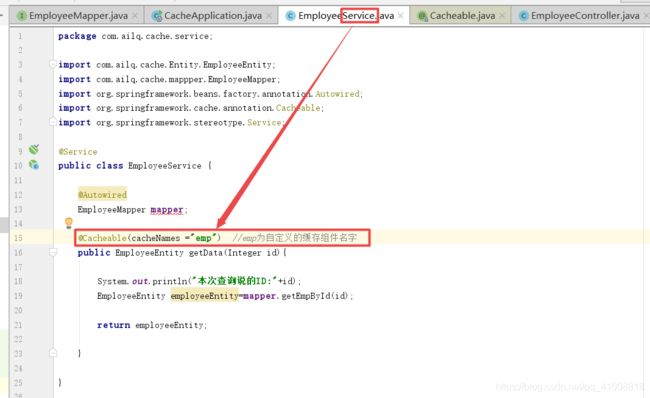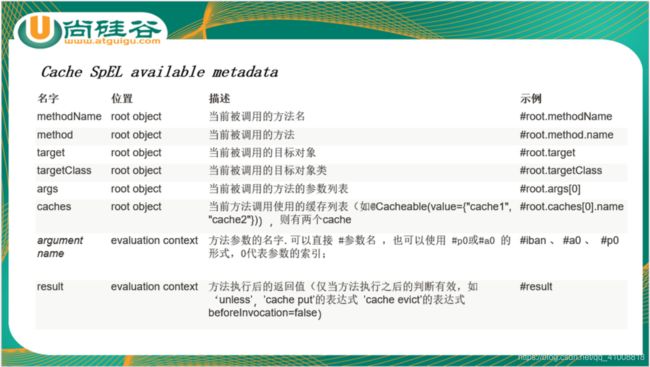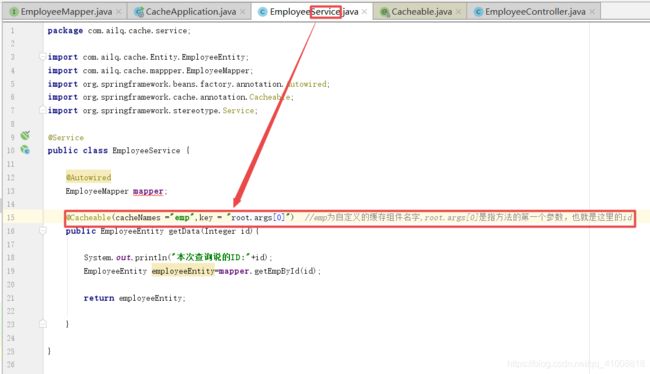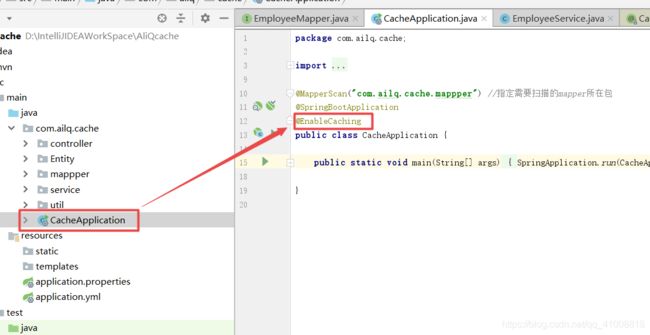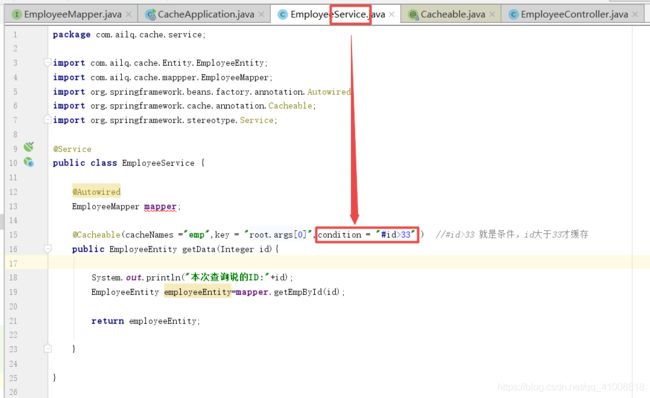- 【javap反编译】
JavaGameServer
#JVMjava
1)javap-verboseTest.class//查看字节码(arthas的jd代替查看指定类的信息)对比:可以用arthas的jad代替,jad更强大
- 【Java 基础(人话版)】JDK 与 JRE
红烧白开水。
java开发语言jdkjre后端软件开发
JDK与JRE:你真的了解它们的区别吗?在Java开发的世界里,我们经常会听到JDK(JavaDevelopmentKit)和JRE(JavaRuntimeEnvironment)这两个名词。很多初学者甚至部分开发者,对它们的区别和联系并不完全清楚。今天,我们就用通俗易懂的方式,一起来搞懂JDK和JRE,并看看Java版本的演进带来了哪些变化。1.JDK和JRE到底是什么?JDK:完整的Java开
- SpringBoot统一功能处理——统一异常处理
棕豆兔&
springbootspringjava
目录一、异常简单使用二、@ControllerAdvice源码分析一、异常简单使用统一异常处理使用的是@ControllerAdvice+@ExceptionHandler来实现的,@ControllerAdvice表示控制器通知类,@ExceptionHandler是异常处理器,两个结合表示当出现异常的时候执行某个通知,也就是执行某个方法事件。importcom.example.demo.mod
- Java开发高级工程师面试,etcd:一款比Redis更骚的分布式锁的实现方式
m0_60732427
程序员面试java后端
Watch机制支持Watch某个固定的key,也支持Watch一个范围(前缀机制)。当被Watch的key或范围发生变化,客户端将收到通知;在实现分布式锁时,如果抢锁失败,可通过Prefix机制返回的Key-Value列表获得Revision比自己小且相差最小的key(称为pre-key),对pre-key进行监听,因为只有它释放锁,自己才能获得锁,如果Watch到pre-key的DELETE事件
- 大模型——Spring Boot 整合 Spring AI 实现项目接入ChatGPT
不二人生
大模型人工智能大模型
大模型——SpringBoot整合SpringAI实现项目接入ChatGPT随着人工智能技术的快速发展,越来越多的应用程序开始集成人工智能功能,以提供更智能、更个性化的体验。诸如ChatGPT等开放性大型语言模型的出现,使得自然语言处理和对话系统的开发变得更加容易和普及。这些技术已经在社交媒体、客户服务、教育等领域展现出巨大潜力,对于提升用户体验和提高工作效率至关重要。优势在之前,openai已经
- Android Studio打包cocos creator项目出现java.lang.UnsatisfiedLinkError:SDKWrapper.nativeLoadAllPlugins:()
ToBeTheOnlyOne
Androidcocoscreatorandroidandroidstudio游戏
最近用cocoscreator开发一个游戏,用AndroidStudio打包Apk时却出现了以下错误:Process:org.cocos2dx.javascript,PID:24123java.lang.UnsatisfiedLinkError:Nativemethodnotfound:org.cocos2dx.javascript.SDKWrapper.nativeLoadAllPlugins:
- Java 拦截器实战:从入门到精通(精选)
我真的不想做程序员
javajavaspring开发语言后端算法
目录一、拦截器基础概念二、实战案例1.用户认证与授权2.请求日志与性能监控3.国际化与本地化三、注册拦截器四、总结在JavaWeb开发中,拦截器是一种强大的工具,它允许开发者在请求处理的各个环节进行拦截和处理。与过滤器类似,拦截器也能够对请求和响应进行操作,但它工作在SpringMVC框架内部,能够访问Spring管理的Bean,与Spring的依赖注入无缝集成。本文将通过实战案例,帮助您深入理解
- UOS统信系统 WebServer服务器
你可知这世上再难遇我
2024~23技能大赛UOS统信系统webserver
题目解题##配置apache基础环境##apache主页面和子页面认证##认证子页面##创建ldap用户##签发证书##配置重定向+https##配置重定向##配置Opendaylight##配置java##安装mininet和ovswitch测试##配置流表##开启HTTP-Server##h3获取h1主机文件题目提供www.skills.comskills公司的门户网站;使用apache服务;
- 使用JAVA上抓取Socket服务端和客户端通信TCP数据包
螺旋大西瓜
JAVAjavatcpip
使用Java抓取Socket通信TCP数据包使用WireShark默认使用的是winpcap去抓本地环回的数据包,需要安装npcap再在Wireshark选择本地环回的网卡抓包在Java-Socket中,在本地Socket不使用127网段无法与服务端进行通信。但是常用的Jcap和Pcap4j都是依据libpcap/winpcap实现的。但是这俩又抓不到本地127网段的数据包。所以选择在局域网中使用
- spring核心:IOC和AOP详解
sc重新启程
springjava后端
引言Spring是众多开源java项⽬中的⼀员,基于分层的javaEE应⽤⼀站式轻量级开源框架,目的是简化企业应用程序的开发,主要核⼼是IOC(控制反转/依赖注⼊)与AOP(⾯向切⾯)两⼤技术,实现项⽬在开发过程中的轻松解耦,提⾼项⽬的开发效率。在项⽬中引⼊Spring可以降低组件之间的耦合度,实现软件各层之间的解耦。SpringIOCIOC,InversionofControl,控制反转,指将对
- Java面向对象的核心:继承与多态
BugSlayerLiu
java学习笔记java开发语言
“继承”和“多态”是面向对象编程(OOP)中的两个核心概念,它们共同为代码的复用性、可扩展性和灵活性提供了强大的支持。在Java中,这两个概念被广泛应用于类的设计和程序的实现中。一、继承(一)基本概念在Java中,继承是一种通过extends关键字实现类与类之间关系的机制。它允许一个类(子类)继承另一个类(父类)的属性和方法。通过继承,子类可以复用父类的代码,同时还可以添加新的功能或修改父类的行为
- JavaScript中的主要知识点
C7211BA
javascriptokhttp开发语言
一、基础语法与数据类型变量声明使用var(函数作用域)、let(块级作用域)和const(常量)声明变量,理解变量提升与暂时性死区。数据类型分为基本类型(Undefined、Null、Boolean、Number、String、Symbol、BigInt)和引用类型(Object、Array、Function)。注意类型转换规则(如==与===的区别)。运算符与控制流程包括算术、比较、逻辑运算符,
- 技术解析:格意互联商城系统(多端适配+开源二次开发
西安漫格科技
开源
一、系统概述格意互联商城系统由西安漫格网络科技有限公司独立研发,专注于商城线上销售场景,支持多端适配(APP、小程序、公众号、H5)及二次开发。系统基于JAVA技术栈构建,采用SpringBoot+JPA作为后端框架,前端用户端使用UniApp实现跨平台兼容,管理端基于Vue+ElementUI开发,具备高扩展性与灵活性111。二、技术架构核心技术栈后端服务:SpringBoot+JPA,支持高并
- linux文件io实训小结,linux学习之IO操作,文件IO总结
weixin_39743064
linux文件io实训小结
文件IO不带缓存,每个read和write都调用内核中的相应系统调用。文件IO常用函数:open,close,read,write,lseek对于内核而言,所有打开文件都有文件描述符引用。文件描述符是一个非负整数。当打开一个现存文件或创建一个新文件时,你诶和向进程返回一个文件描述符。当读、写一个文件时,用open返回的文件描述符标识该文件,将其作为参数传给read或write。1.open(被打开
- spring笔记
@卡卡-罗特
spring笔记java
01spring简介1.Spring是什么?•定义:Spring是Java生态中轻量级、开源的全栈应用开发框架,核心目标是简化企业级Java应用的开发。•核心思想:•IoC(控制反转):将对象的创建和管理交给框架,开发者无需手动new对象。•AOP(面向切面编程):通过代理机制,将日志、事务等横切关注点与业务代码解耦。•模块化设计:自由组合所需功能(如Web、数据访问、安全等)。2.Spring的
- Spring MVC笔记
@卡卡-罗特
springmvc笔记
01什么是SpringMVCSpringMVC是Spring框架中的一个核心模块,专门用于构建Web应用程序。它基于经典的MVC设计模式(Model-View-Controller),但通过Spring的特性(如依赖注入、注解驱动)大幅简化了开发流程。SpringMVC是什么?本质:一个基于Java的Web框架,帮助开发者快速、结构化地开发动态网站或RESTfulAPI。核心思想:将应用程序拆分为
- Redis 的过期策略与内存淘汰机制
I~Lucky
redis数据库缓存
摘要:Redis作为高性能的键值存储系统,其过期策略和内存淘汰机制是保证数据时效性和内存高效利用的核心功能。一、Redis过期策略1.1过期策略的作用Redis允许为键设置过期时间(TTL,TimeToLive),过期策略用于在键过期后自动删除数据,确保缓存中的数据不会长期存在而过时。1.2过期策略的实现方式Redis通过以下两种方式实现过期键的删除:1.2.1定期删除(ActiveExpirat
- 使用Java进行加密狗相关程序优化
加密狗定制分析赋值
运维数据库服务器人工智能pygame
个人心得1.加密狗通信优化-减少不必要的交互-分析加密狗操作流程,去除冗余的读取或写入操作。例如,如果在初始化阶段已经获取了某些配置信息且在后续流程中不会改变,就不需要重复读取。-批量处理加密狗相关的操作。如果需要对加密狗进行多次数据写入或读取,尝试将这些操作合并为一次批量操作(如果加密狗驱动和API支持)。-优化通信协议-深入了解加密狗与Java程序之间的通信协议。如果协议允许,采用更高效的编码
- Springboot中使用@Async注解7大失效场景及解决方案
江-小北
Java面试题springboot数据库java
前言在SpringBoot中,@Async注解就像一把瑞士军刀,能帮你轻松处理那些耗时的任务,让主线程可以继续忙别的事儿。不过,跟所有强大的工具一样,用不好它也可能出岔子。有时候,你可能因为线程池没配好、异常没处理好,或者Spring代理没生效等原因,导致@Async没按你期望的那样工作。为了避免这些坑,咱们得深入了解下@Async是怎么工作的,还要知道怎么用才能不出问题。接下来,咱们就来聊聊7种
- ```markdown
伍辰惟
#超越边界:构建优雅的六边形架构(HexagonalArchitecture)hex-arch-kotlin-spring-bootReferenceJVMmultimoduleprojectforareactivemicroserviceandlambdausingahexagonalarchitecture,DDD,Kotlin,SpringBoot,Quarkus,Lambda,Gradle
- Java基础系列:深入解析抽象类、接口与Lambda表达式及避坑指南
JouJz
java开发语言
目录一、抽象类:半成品的艺术1.核心特征解析2.典型应用场景3.三大经典陷阱陷阱1:尝试实例化抽象类陷阱2:未实现全部抽象方法陷阱3:构造方法调用可覆盖方法二、接口:行为契约的进化1.接口的现代形态(Java8+)2.接口与抽象类对比3.五大核心陷阱陷阱1:默认方法冲突陷阱2:常量隐藏陷阱3:静态方法陷阱陷阱4:函数式接口误用陷阱5:接口演化风险三、Lambda表达式:简洁之美与暗礁1.核心语法全
- Java虚拟机之内存分配原则
JouJz
java开发语言jvm
目录一、JVM内存模型概览二、核心内存分配原则1.对象优先分配在Eden区2.大对象直接进入老年代3.长期存活对象晋升老年代4.空间分配担保5.TLAB(线程本地分配缓冲)三、内存分配流程图解四、调优参数与实战建议1.堆内存配置2.避免内存泄漏与频繁GC3.案例分析五、总结一、JVM内存模型概览JVM的内存分配围绕“堆(Heap)”展开,堆内存按对象生命周期划分为不同区域,以实现高效的内存管理和垃
- Node.js原型链污染之前端
AvskBug
node.js前端
原型链污染是一种常见的安全漏洞,特别是在前端开发中。本文将详细介绍Node.js中的原型链污染问题,并提供相应的源代码示例。在阅读本文之前,请确保您对JavaScript和Node.js的基本概念有一定的了解。什么是原型链污染?原型链污染是指攻击者能够通过修改JavaScript对象的原型链来影响属性和方法的访问。这种攻击通常利用了JavaScript中原型继承的特性,通过修改原型链来更改对象的行
- xxssss
墨菲斯托888
xss前端javascript
XSS。这是一种将任意Javascript代码插入到其他Web用户页面中执行以达到攻击目的的漏洞。攻击者利用浏览器的动态展示数据功能,在HTML页面里嵌入恶意代码。当用户浏览该页时,这些潜入在HTML中的恶意代码会被执行,用户浏览器被攻击者控制,从而达到攻击者的特殊目的,为了执行javascirpt代码,XSS攻击的脚本通常被嵌入到网页的HTML、JavaScript代码中,或者通过URL参数传递
- xXSS
墨菲斯托888
xss前端
XSS漏洞:XSS又叫CSS(CrossSiteScript)跨站脚本攻击是一种针对网站应用程序的安全漏洞攻击技术,是代码注入的一种。它允许恶意用户将代码注入网页,其他用户在浏览网页时会受到影响。恶意用户利用xss代码攻击成功后,可能得到很高的权限:私密网页内容,会话和Cookiexss漏洞通常是通过php的输出函数将javascript代码输出到html页面中,通过用户本地浏览器执行的,所以xs
- IntelliJ IDEA 快捷键全解析:让你的开发效率翻倍!
Leaton Lee
intellij-ideajavaide
引言:为什么学习IDEA快捷键?作为一名Java开发者,IntelliJIDEA是你每天都会使用的工具。而掌握IDEA的快捷键,就像是为你的开发之旅装上了一对“翅膀”!想象一下,当你在编码时,手指不需要离开键盘,就能完成代码补全、跳转到目标类、格式化代码甚至调试程序。这些快捷操作不仅能让你的效率翻倍,还能让你在团队中显得更加专业!在这篇文章中,我将为你详细讲解IDEA中最常用的快捷键,从代码补全到
- Spring Boot笔记
@卡卡-罗特
springboot笔记后端
01概要SpringBoot是Java领域最流行的快速开发框架,专为简化Spring应用的初始搭建和开发而设计。一、SpringBoot解决了什么问题?传统Spring痛点•繁琐的XML配置•需要手动管理依赖版本•部署依赖外部Web服务器(如Tomcat)SpringBoot的答案•约定优于配置:自动配置80%的默认设置•内嵌服务器:直接打包成可执行JAR•起步依赖:一键集成常用技术栈(如数据库、
- 探索未来架构的钥匙:Hex-Arch-Kotlin-Spring-Boot
孟振优Harvester
探索未来架构的钥匙:Hex-Arch-Kotlin-Spring-Boothex-arch-kotlin-spring-bootReferenceJVMmultimoduleprojectforareactivemicroserviceandlambdausingahexagonalarchitecture,DDD,Kotlin,SpringBoot,Quarkus,Lambda,Gradle.项
- 告别繁琐!Vue3 组合式函数解锁 Echarts 封装新姿势
前端echarts
前言本篇文章主要讲解如何使用组合式函数(Composables)来封装Echarts,提供一套可复用、易维护的图表解决方案在这里你能够学到Echarts封装的思路与最佳实践,理解Echarts的特性与使用技巧本文也是《通俗易懂的中后台系统建设指南》系列的第六篇文章,该系列旨在告诉你如何来构建一个优秀的中后台管理系统什么是EchartsEcharts是一个基于JavaScript的开源可视化图表库,
- 数据分析师的SQL到底应该掌握到什么程度
流里流气李
sqlmysql数据库
最近有网站统计了“雇主最想要的技术技能”,其中SQL力压Java、Python等,排名第一,成为雇主们最喜爱的技能。SQL简直是数据岗位心照不宣的“宠儿”。随手翻开网上对于数据分析岗位的要求,我们就会发现,熟悉SQL是必须的任职要求。都知道做数据分析需要学习sql,但在学习的过程中还是不太清楚,应该掌握到什么程度。今天给大家讲一下作为数据分析师:不需要学习的部分、基础部分和进阶部分。首先我们先揭穿
- mongodb3.03开启认证
21jhf
mongodb
下载了最新mongodb3.03版本,当使用--auth 参数命令行开启mongodb用户认证时遇到很多问题,现总结如下:
(百度上搜到的基本都是老版本的,看到db.addUser的就是,请忽略)
Windows下我做了一个bat文件,用来启动mongodb,命令行如下:
mongod --dbpath db\data --port 27017 --directoryperdb --logp
- 【Spark103】Task not serializable
bit1129
Serializable
Task not serializable是Spark开发过程最令人头疼的问题之一,这里记录下出现这个问题的两个实例,一个是自己遇到的,另一个是stackoverflow上看到。等有时间了再仔细探究出现Task not serialiazable的各种原因以及出现问题后如何快速定位问题的所在,至少目前阶段碰到此类问题,没有什么章法
1.
package spark.exampl
- 你所熟知的 LRU(最近最少使用)
dalan_123
java
关于LRU这个名词在很多地方或听说,或使用,接下来看下lru缓存回收的实现
1、大体的想法
a、查询出最近最晚使用的项
b、给最近的使用的项做标记
通过使用链表就可以完成这两个操作,关于最近最少使用的项只需要返回链表的尾部;标记最近使用的项,只需要将该项移除并放置到头部,那么难点就出现 你如何能够快速在链表定位对应的该项?
这时候多
- Javascript 跨域
周凡杨
JavaScriptjsonp跨域cross-domain
- linux下安装apache服务器
g21121
apache
安装apache
下载windows版本apache,下载地址:http://httpd.apache.org/download.cgi
1.windows下安装apache
Windows下安装apache比较简单,注意选择路径和端口即可,这里就不再赘述了。 2.linux下安装apache:
下载之后上传到linux的相关目录,这里指定为/home/apach
- FineReport的JS编辑框和URL地址栏语法简介
老A不折腾
finereportweb报表报表软件语法总结
JS编辑框:
1.FineReport的js。
作为一款BS产品,browser端的JavaScript是必不可少的。
FineReport中的js是已经调用了finereport.js的。
大家知道,预览报表时,报表servlet会将cpt模板转为html,在这个html的head头部中会引入FineReport的js,这个finereport.js中包含了许多内置的fun
- 根据STATUS信息对MySQL进行优化
墙头上一根草
status
mysql 查看当前正在执行的操作,即正在执行的sql语句的方法为:
show processlist 命令
mysql> show global status;可以列出MySQL服务器运行各种状态值,我个人较喜欢的用法是show status like '查询值%';一、慢查询mysql> show variab
- 我的spring学习笔记7-Spring的Bean配置文件给Bean定义别名
aijuans
Spring 3
本文介绍如何给Spring的Bean配置文件的Bean定义别名?
原始的
<bean id="business" class="onlyfun.caterpillar.device.Business">
<property name="writer">
<ref b
- 高性能mysql 之 性能剖析
annan211
性能mysqlmysql 性能剖析剖析
1 定义性能优化
mysql服务器性能,此处定义为 响应时间。
在解释性能优化之前,先来消除一个误解,很多人认为,性能优化就是降低cpu的利用率或者减少对资源的使用。
这是一个陷阱。
资源时用来消耗并用来工作的,所以有时候消耗更多的资源能够加快查询速度,保持cpu忙绿,这是必要的。很多时候发现
编译进了新版本的InnoDB之后,cpu利用率上升的很厉害,这并不
- 主外键和索引唯一性约束
百合不是茶
索引唯一性约束主外键约束联机删除
目标;第一步;创建两张表 用户表和文章表
第二步;发表文章
1,建表;
---用户表 BlogUsers
--userID唯一的
--userName
--pwd
--sex
create
- 线程的调度
bijian1013
java多线程thread线程的调度java多线程
1. Java提供一个线程调度程序来监控程序中启动后进入可运行状态的所有线程。线程调度程序按照线程的优先级决定应调度哪些线程来执行。
2. 多数线程的调度是抢占式的(即我想中断程序运行就中断,不需要和将被中断的程序协商)
a)
- 查看日志常用命令
bijian1013
linux命令unix
一.日志查找方法,可以用通配符查某台主机上的所有服务器grep "关键字" /wls/applogs/custom-*/error.log
二.查看日志常用命令1.grep '关键字' error.log:在error.log中搜索'关键字'2.grep -C10 '关键字' error.log:显示关键字前后10行记录3.grep '关键字' error.l
- 【持久化框架MyBatis3一】MyBatis版HelloWorld
bit1129
helloworld
MyBatis这个系列的文章,主要参考《Java Persistence with MyBatis 3》。
样例数据
本文以MySQL数据库为例,建立一个STUDENTS表,插入两条数据,然后进行单表的增删改查
CREATE TABLE STUDENTS
(
stud_id int(11) NOT NULL AUTO_INCREMENT,
- 【Hadoop十五】Hadoop Counter
bit1129
hadoop
1. 只有Map任务的Map Reduce Job
File System Counters
FILE: Number of bytes read=3629530
FILE: Number of bytes written=98312
FILE: Number of read operations=0
FILE: Number of lar
- 解决Tomcat数据连接池无法释放
ronin47
tomcat 连接池 优化
近段时间,公司的检测中心报表系统(SMC)的开发人员时不时找到我,说用户老是出现无法登录的情况。前些日子因为手头上 有Jboss集群的测试工作,发现用户不能登录时,都是在Tomcat中将这个项目Reload一下就好了,不过只是治标而已,因为大概几个小时之后又会 再次出现无法登录的情况。
今天上午,开发人员小毛又找到我,要我协助将这个问题根治一下,拖太久用户难保不投诉。
简单分析了一
- java-75-二叉树两结点的最低共同父结点
bylijinnan
java
import java.util.LinkedList;
import java.util.List;
import ljn.help.*;
public class BTreeLowestParentOfTwoNodes {
public static void main(String[] args) {
/*
* node data is stored in
- 行业垂直搜索引擎网页抓取项目
carlwu
LuceneNutchHeritrixSolr
公司有一个搜索引擎项目,希望各路高人有空来帮忙指导,谢谢!
这是详细需求:
(1) 通过提供的网站地址(大概100-200个网站),网页抓取程序能不断抓取网页和其它类型的文件(如Excel、PDF、Word、ppt及zip类型),并且程序能够根据事先提供的规则,过滤掉不相干的下载内容。
(2) 程序能够搜索这些抓取的内容,并能对这些抓取文件按照油田名进行分类,然后放到服务器不同的目录中。
- [通讯与服务]在总带宽资源没有大幅增加之前,不适宜大幅度降低资费
comsci
资源
降低通讯服务资费,就意味着有更多的用户进入,就意味着通讯服务提供商要接待和服务更多的用户,在总体运维成本没有由于技术升级而大幅下降的情况下,这种降低资费的行为将导致每个用户的平均带宽不断下降,而享受到的服务质量也在下降,这对用户和服务商都是不利的。。。。。。。。
&nbs
- Java时区转换及时间格式
Cwind
java
本文介绍Java API 中 Date, Calendar, TimeZone和DateFormat的使用,以及不同时区时间相互转化的方法和原理。
问题描述:
向处于不同时区的服务器发请求时需要考虑时区转换的问题。譬如,服务器位于东八区(北京时间,GMT+8:00),而身处东四区的用户想要查询当天的销售记录。则需把东四区的“今天”这个时间范围转换为服务器所在时区的时间范围。
- readonly,只读,不可用
dashuaifu
jsjspdisablereadOnlyreadOnly
readOnly 和 readonly 不同,在做js开发时一定要注意函数大小写和jsp黄线的警告!!!我就经历过这么一件事:
使用readOnly在某些浏览器或同一浏览器不同版本有的可以实现“只读”功能,有的就不行,而且函数readOnly有黄线警告!!!就这样被折磨了不短时间!!!(期间使用过disable函数,但是发现disable函数之后后台接收不到前台的的数据!!!)
- LABjs、RequireJS、SeaJS 介绍
dcj3sjt126com
jsWeb
LABjs 的核心是 LAB(Loading and Blocking):Loading 指异步并行加载,Blocking 是指同步等待执行。LABjs 通过优雅的语法(script 和 wait)实现了这两大特性,核心价值是性能优化。LABjs 是一个文件加载器。RequireJS 和 SeaJS 则是模块加载器,倡导的是一种模块化开发理念,核心价值是让 JavaScript 的模块化开发变得更
- [应用结构]入口脚本
dcj3sjt126com
PHPyii2
入口脚本
入口脚本是应用启动流程中的第一环,一个应用(不管是网页应用还是控制台应用)只有一个入口脚本。终端用户的请求通过入口脚本实例化应用并将将请求转发到应用。
Web 应用的入口脚本必须放在终端用户能够访问的目录下,通常命名为 index.php,也可以使用 Web 服务器能定位到的其他名称。
控制台应用的入口脚本一般在应用根目录下命名为 yii(后缀为.php),该文
- haoop shell命令
eksliang
hadoophadoop shell
cat
chgrp
chmod
chown
copyFromLocal
copyToLocal
cp
du
dus
expunge
get
getmerge
ls
lsr
mkdir
movefromLocal
mv
put
rm
rmr
setrep
stat
tail
test
text
- MultiStateView不同的状态下显示不同的界面
gundumw100
android
只要将指定的view放在该控件里面,可以该view在不同的状态下显示不同的界面,这对ListView很有用,比如加载界面,空白界面,错误界面。而且这些见面由你指定布局,非常灵活。
PS:ListView虽然可以设置一个EmptyView,但使用起来不方便,不灵活,有点累赘。
<com.kennyc.view.MultiStateView xmlns:android=&qu
- jQuery实现页面内锚点平滑跳转
ini
JavaScripthtmljqueryhtml5css
平时我们做导航滚动到内容都是通过锚点来做,刷的一下就直接跳到内容了,没有一丝的滚动效果,而且 url 链接最后会有“小尾巴”,就像#keleyi,今天我就介绍一款 jquery 做的滚动的特效,既可以设置滚动速度,又可以在 url 链接上没有“小尾巴”。
效果体验:http://keleyi.com/keleyi/phtml/jqtexiao/37.htmHTML文件代码:
&
- kafka offset迁移
kane_xie
kafka
在早前的kafka版本中(0.8.0),offset是被存储在zookeeper中的。
到当前版本(0.8.2)为止,kafka同时支持offset存储在zookeeper和offset manager(broker)中。
从官方的说明来看,未来offset的zookeeper存储将会被弃用。因此现有的基于kafka的项目如果今后计划保持更新的话,可以考虑在合适
- android > 搭建 cordova 环境
mft8899
android
1 , 安装 node.js
http://nodejs.org
node -v 查看版本
2, 安装 npm
可以先从 https://github.com/isaacs/npm/tags 下载 源码 解压到
- java封装的比较器,比较是否全相同,获取不同字段名字
qifeifei
非常实用的java比较器,贴上代码:
import java.util.HashSet;
import java.util.List;
import java.util.Set;
import net.sf.json.JSONArray;
import net.sf.json.JSONObject;
import net.sf.json.JsonConfig;
i
- 记录一些函数用法
.Aky.
位运算PHP数据库函数IP
高手们照旧忽略。
想弄个全天朝IP段数据库,找了个今天最新更新的国内所有运营商IP段,copy到文件,用文件函数,字符串函数把玩下。分割出startIp和endIp这样格式写入.txt文件,直接用phpmyadmin导入.csv文件的形式导入。(生命在于折腾,也许你们觉得我傻X,直接下载人家弄好的导入不就可以,做自己的菜鸟,让别人去说吧)
当然用到了ip2long()函数把字符串转为整型数
- sublime text 3 rust
wudixiaotie
Sublime Text
1.sublime text 3 => install package => Rust
2.cd ~/.config/sublime-text-3/Packages
3.mkdir rust
4.git clone https://github.com/sp0/rust-style
5.cd rust-style
6.cargo build --release
7.ctrl
